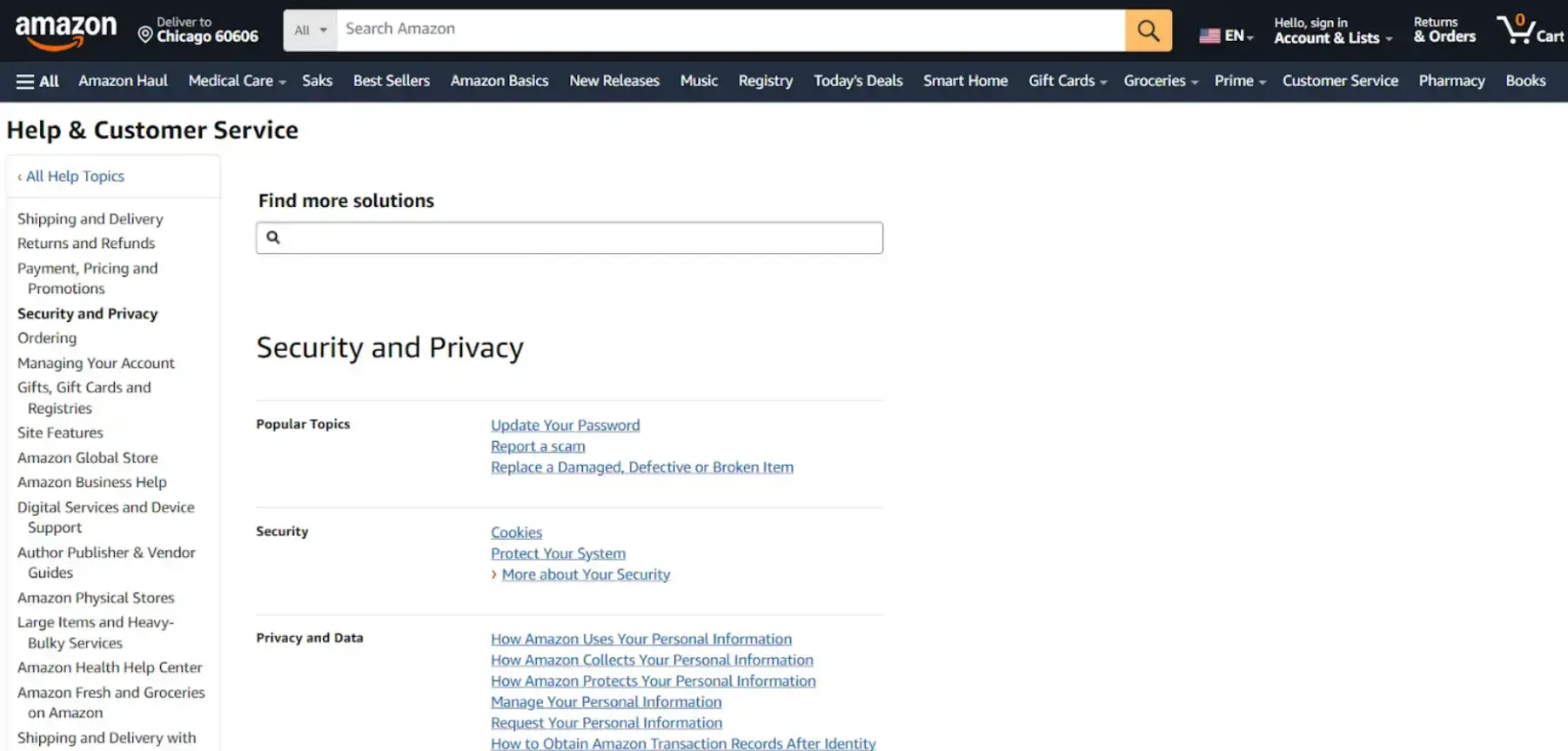Consumer concerns around cybersecurity and data privacy are at an all-time high, especially when it comes to e-commerce. In e-commerce, customers often hand over a large amount of sensitive information: names, addresses, financial details, even just the products they’re purchasing.
This information makes e-commerce businesses prime targets for hackers and cybercriminals.
Most consumers are aware of these risks, so they need to feel confident that their data is secure before clicking ‘Buy Now’.
That means cybersecurity can’t just be an invisible backend layer on your e-commerce storefront. Instead, it’s the frontline of your store’s reputation and a vital element in every customer’s decision to engage and return.
This article dives into why rock-solid cybersecurity and transparent data-protection policies are no longer optional extras but fundamental to winning and keeping customer confidence. It’s not just about having rock-solid defenses, it’s about being able to show your customers you’re putting their security first.
Article Shortcuts:
- Why E-Commerce Security Matters for Customer Trust
- Common E-Commerce Cybersecurity Threats
- Must-Have Security Features for E-Commerce Sites
- Building Trust Through Transparency
- FAQs

Source: Unsplash
Why E-Commerce Security Matters for Customer Trust
Customer confidence in a company’s ability to secure personal and financial details stands as one of the most important factors for e-commerce success.
A single data breach can rapidly erode hard-won goodwill, driving customers to competitors and inflicting long-lasting brand damage.
Adding even greater complexity is the problem of data sprawl, with 1 in 3 breaches involving shadow data that companies struggle to track.
The fallout from cyber incidents can be devastating: loss of customer engagement, supply-chain disruptions, legal penalties for non-compliance, and multi-million-dollar cleanup costs.
In such an environment, security isn’t a ‘nice-to-have’, it’s mission-critical. A breach doesn’t just jeopardize data, it jeopardizes the very trust that underpins e-commerce transactions.
Customers have grown much more aware of the value of their data to organizations. Investing in proper cybersecurity is evidence that a brand is treating this exchange fairly:
“It’s important to state upfront that data drives success and it is the fuel for our engines. Because of this, it must be managed carefully to maximize its value and efficiency and to minimize the risks involved. Companies and organizations that understand this stand to differentiate themselves in the eyes of their customers.” - Lance Hayden, Vice President, Chief Information Security Strategist at Vericast.

Source: Pexels
Common E-Commerce Cybersecurity Threats
Cybercriminals are growing more persistent and sophisticated, targeting businesses regardless of size.
Phishing attacks, which use fraudulent communications to trick customers into revealing sensitive information, remain a top vector and account for a significant portion of data compromises.
Malware and ransomware (malicious software that corrupts data or locks systems until a ransom is paid) also pose major threats to e-commerce operations.
More specific cyberthreats to e-commerce sites and their customers include:-
- E-skimming, commonly known as Magecart attacks, stealthily injects malicious code into checkout pages to harvest payment details.
- Distributed Denial of Service (DDoS) attacks overwhelm servers with traffic, making sites unavailable at critical shopping moments.
- Cross-Site Scripting (XSS) and Man-in-the-Middle (MITM) attacks intercept or inject code to hijack sessions or redirect users.
- Financial fraud, including credit card fraud and identity theft, continues to escalate, driving demand for real-time detection solutions.
- Exploitation of known software vulnerabilities and brute-force password attacks remain reliable methods for unauthorized access.
- Bot attacks, from credential stuffing to content scraping, further undermine security and performance.
- Even fake duplicate sites, clones of legitimate stores, trick unsuspecting customers into divulging information.
Many of these issues will be known to consumers, and they’ll be hesitant to engage with brands and sites that they don’t trust to be capable of mitigating the threat to their own personal data security.
“Cyber threats like ransomware play a critical role in organizations’ ability to keep their data safe. Knowing how public attacks have gotten and considering consumer demands for better transparency into business security measures, there’s generally more awareness around ransomware.” - Dave Russell, VP of Enterprise Strategy at Veeam.
Must-Have Security Features for E-Commerce Sites
Certain cybersecurity standards are expected these days from e-commerce sites.
Whether your customers are tech-savvy cybersecurity experts or only aware of the basic principles, having these safeguards in place will go a long way towards building trust with your audience.
-
Data Encryption and SSL Certificates
End-to-End Encryption scrambles data during transmission, rendering it unreadable to unauthorized parties. SSL/TLS certificates encrypt the channel between a customer’s browser and your server, protecting sensitive checkout details.
Modern browsers now flag HTTP sites as ‘Not Secure’, prompting up to 85% of shoppers to abandon or avoid such sites altogether. Equally important is encryption of data at rest: guarding stored information within databases against unauthorized access.
-
Authentication Protocols and MFA
Strong, unique passwords are the first line of defense for both employees and customers.
Encouraging complexity and uniqueness, ideally managed via password vaults, helps thwart brute-force and credential-reuse attacks. Multi-Factor Authentication (MFA) adds an additional verification step, dramatically reducing the risk of compromise from stolen credentials.
Depending on the scale of your operation, implementing a Zero Trust model can further fortify security by continuously verifying every access request, regardless of origin.
-
Staying Secure While Traveling
Maintaining security is especially important for e-commerce company owners and staff members who are always on the go, whether for business travels or remote work.
A trip using an eSIM guarantees a consistent connection, lets you safely access your e-commerce site, look for security flaws, and answer consumer questions free from the danger of untrustworthy or unsecured networks.
An eSIM from providers like Simify lets you oversee operations from a distance and remain connected, so ensuring that your company functions well regardless of your location.
-
Firwalls and Platform-Level Protection
Firewalls and Intrusion Detection/Prevention Systems (IDS/IDPS) serve as your main gatekeepers for blocking suspicious network traffic. There are security plugins for the most popular e-commerce platforms that can track and mitigate threats in real time.
You’ll need regular software updates and patch management to close any known vulnerabilities that attackers exploit.
Along with these defenses, strong strategies around domain management (to prevent unauthorized domain changes) and network segmentation (to isolate systems and limit the scope of any breach) are important.
-
PCI DSS Compliance and Secure Payments
Adhering to PCI DSS standards is non-negotiable for any business handling card payments. Compliance demonstrates to customers and regulators that you meet rigorous requirements for data security.
Using a PCI DSS-certified gateway shifts much of the burden: your payment provider handles encryption, tokenization, and fraud detection, while you avoid storing sensitive card data directly.
Many merchants have adopted tokenization, replacing card numbers with unique reference tokens, minimizing liability in case of a breach.
-
Proactive Threat Monitoring and Backups
You need regular security audits and vulnerability assessments to help identify weaknesses before attackers do.
With this information, you can build incident response plans to ensure swift, organized action and transparent communication if a breach occurs.
Finally, robust backup and recovery procedures, tested frequently, enable you to rapidly restore operations and data integrity if the worst occurs.
Building Trust Through Transparency
Having this tech and procedures in place is great, as they’ll keep you and your customers more secure.
But there’s added value in leveraging them to build trust with customers. Technical defenses alone won’t win trust if customers don’t understand or value them.
You don’t necessarily want to share your full security tech stack publicly.
However, including a prominently displayed badge from your cybersecurity provider on your website can help build trust with your customers, particularly if it's from a widely known provider like Norton or McAfee.

Source: Econsultancy
Transparency about data-collection practices, explained in clear, jargon-free language, helps your site visitors feel in control.
You should clearly outline how and why you use customer data, whether for order updates or marketing, to build credibility. This is particularly important when it comes to compliance with regional data protection regulations, like GDPR.
You should disclose any third-party data sharing, such as analytics or fulfillment partners, and display visible trust signals throughout your site: SSL badges, PCI DSS logos, and recognized security-seal icons.
Studies show that featuring trust badges can boost conversions by up to 42%. Along with all this, you can offer customer education through blog posts or FAQs on how you protect data and manage payments.
Even just the simple step of asking for feedback on your security via surveys, social media, or other customer feedback channels can show you value your customers’ concerns and are continuously striving to improve security and service.

Source: Amazon
-
Impact of Security on Conversions and Loyalty
When customers feel secure, they’re far more likely to complete purchases: optimized trust and security elements can yield double-digit increases in checkout completion. And there are continued benefits beyond the sale, trust is an excellent way to build loyalty.
Satisfied customers tend to return, and they’re more likely to recommend brands to peers, which drives organic growth.
Reducing any perceived risks can lead directly to higher purchase intentions. All those checklist items, like SSL certificates, PCI DSS compliance, fraud monitoring, and more, can translate into tangible business outcomes. More conversions, fewer abandoned carts, and a growing base of repeat customers.
FAQs
1. Why do customers care about an e-commerce site’s cybersecurity?
Customers entrust e-commerce sites with highly sensitive information (names, addresses, payment details) and know that a breach can expose them to identity theft, financial loss, and personal embarrassment.
When shoppers don’t feel confident that their data is protected, they hesitate to click “Buy Now” and may abandon their carts or take their business elsewhere.
Ensuring strong security isn’t just about preventing hacks, it’s about preserving the trust you’ve worked hard to earn.
2. How do robust cybersecurity measures help customers trust an e-commerce site?
Visible, industry-standard protections, like SSL/TLS encryption during checkout, multi-factor authentication, and up-to-date security patches, show customers you take their safety seriously.
When shoppers see evidence of proactive defenses and know you’re continuously monitoring and updating your systems, they feel more comfortable sharing their information and returning for future purchases.
3. How can I show customers that my e-commerce site is trustworthy?
Don’t hide your security efforts, highlight them!
Display recognized trust badges (e.g., Norton, McAfee, PCI DSS) near payment fields, use clear, jargon-free explanations of how you collect and protect data, and openly disclose any third-party integrations.
Adding a security overview or FAQ page on your site, sharing regular audit results or compliance certificates, and even inviting feedback on your privacy practices all reinforce the message that you put customer safety first.
Conclusion
Cybersecurity sits at the heart of customer confidence and brand reputation in e-commerce. But once you have those defences in place, you need to make sure your customers know about them.
Secure transactions form the foundation for enduring relationships between your business and your customers, but they need to know things are secure first and foremost!
Author Bio
Shanice Jones is a techy nerd and copywriter from Chicago. For the last five years, she has helped over 20 startups build B2C and B2B content strategies that have allowed them to scale their business and help users around the world.



